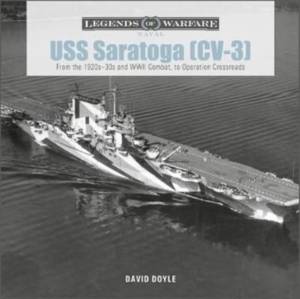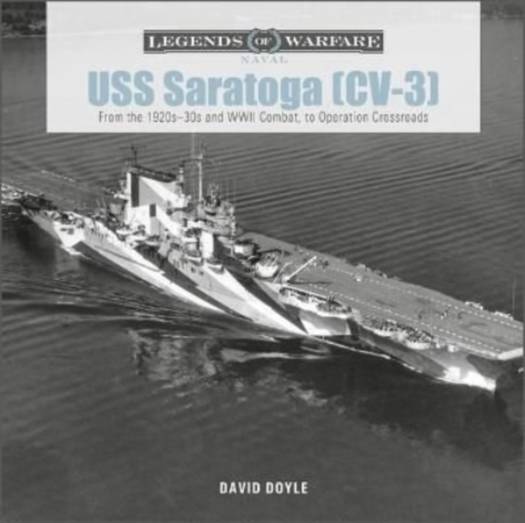
- Retrait gratuit dans votre magasin Club
- 7.000.000 titres dans notre catalogue
- Payer en toute sécurité
- Toujours un magasin près de chez vous
- Retrait gratuit dans votre magasin Club
- 7.000.000 titres dans notre catalogue
- Payer en toute sécurité
- Toujours un magasin près de chez vous
34,45 €
+ 68 points
Description
USS Saratoga and her sister ship USS Lexington were the two largest aircraft carriers in the world until 1944. The keel of the battle cruiser USS Saratoga (CC-3) was laid by New York Shipbuilding in Camden, New Jersey, on September 25, 1920. Work on the fast, formidably armed battle cruiser was suspended in February 1922, when the Washington Naval Conference negotiated limits on warship sizes and numbers. Once the accord was signed, the decision was made to covert the 28 percent complete Saratoga into an aircraft carrier (the same fate befell her sister ship, Lexington). Launched as an aircraft carrier on April 7, 1925, she became the largest ship of that type afloat. Saratoga's revolutionary turboelectric drive and hull design allowed her to operate at 33 knots (either forward or backward), a trait believed to be useful in the event of combat damage to either end of her flight deck. And damaged she was. Though in port at San Diego, California, when the Japanese attacked Pearl Harbor, during the ensuing war the ship was damaged repeatedly, and sometimes severely. Despite this, she fought throughout the war, earning eight battle stars. Following the war, in view of her age, past damage, and the limitations of her design, Saratoga was deemed surplus and was expended as a target during the Bikini Atoll nuclear tests. She survived the first "Able" bomb test but was sunk by the "Baker" test on July 25, 1946. This 144-page volume, an expansion of the author's earlier work, immerses the reader in the construction and operation of the ship at peace and war, as well as detailing the many refits and repairs she underwent, through over 350 photos and illustrations.
Spécifications
Parties prenantes
- Auteur(s) :
- Editeur:
Contenu
- Nombre de pages :
- 144
- Langue:
- Anglais
- Collection :
- Tome:
- n° 26
Caractéristiques
- EAN:
- 9780764364662
- Date de parution :
- 13-12-22
- Format:
- Livre relié
- Format numérique:
- Genaaid
- Dimensions :
- 241 mm x 221 mm
- Poids :
- 884 g







